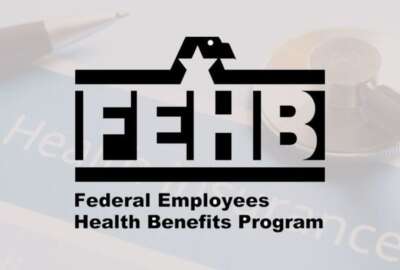Open season is like hunting season. You’ve got to aim carefully
"You really got to pay attention to your health plan for 2025, because some of the rates are going up more than the average," said Tammy Flanagan.
It’s the season of seasons. Thanksgiving season. Christmas season. And for federal employees, it’s nearly *open* season. It has a lot of moving parts. Federal. Long time expert in all things having to do with federal employment and post-employment Tammy Flanagan joined the Federal Drive with Tom Temin to discuss more.
Interview transcript:
Tom Temin It’s the season of seasons, Thanksgiving, Christmas. And for federal employees, it’s still open season, which has a lot of moving parts. For more, we turn to longtime expert on all things having to do with federal employment and post employment Tammy Flanagan. And wow, interesting open season this year given the rate hikes people are seeing.
Tammy Flanagan Absolutely. Tom, thanks for having me. And you’re right, it is going to be an interesting open season for a number of reasons. And you named the big one for many people because you really got to pay attention to your health plan for 2025, because some of the rates are going up more than the average and some are actually going to stay about the same. So it’s really a good time to take a look. And then the other thing we’ve got going on this year is the Postal Service health benefit plan, which is the first time we’ve had a difference for postal workers.
Tom Temin Right. And they have a subset, I guess, of the plans available to other federal employees, but not all of them.
Tammy Flanagan That’s right. The postal health benefit plan will cover both the retirees, the employees and their eligible family members, which would be their spouses and their children, you know, up to age 26 or if they have a child who has a disabling condition, of course, they can be covered as well.
Tom Temin And we say this every year, but still the vast majority of federal employees just rollover into the plan they’ve had. And it just seems to be less and less wise option with each passing year.
Tammy Flanagan Yup, that’s for sure. I think this paralysis by too much analysis when it comes to having so many choices. We’re very fortunate in the federal government that we do have choices for health insurance. But I guess there’s such a thing as having too much to consider, because you start to think about, well, what am I missing? Or there’s 185 page brochure. Do I have to read the whole thing for five different plans to make my choice? So I think people just throw their hands up and say, I know what I’ve got, My doctors take it. I’m just going to stay with it. But when you’re looking at a difference of, in some cases, hundreds of dollars per month between very similar plans. Like I could group together fee for service plans or HMOs or plans that work well with Medicare. And every one of those will have a difference in premium for plans that really much, pretty much look the same, other than maybe they have a different network. So you got to check that.
Tom Temin So would a good way to think about it then is maybe lay out what are my minimum requirements. What do I have to have in this, and then see everyone that has all the have to haves. And then that gives you a basis to get some rationality to the comparison?
Tammy Flanagan You sure you don’t want a second career, Tom? You could be a good benefits specialist because that’s exactly what I tell people, is to try to narrow it down. Like if you want a fee for service plan that’s nationwide that covers you no matter where you travel or if you’re a snowbird. Like we have a lot of folks in Florida here, then you want to just look at those plans. And maybe if you’re older, you may want the higher option or the standard option as opposed to the value option. But if you’re a brand new employee coming in right out of college or high school, pick a value plan. Those can be only $50, $60 biweekly compared to $100 or $200 biweekly for some of those plans that are much more comprehensive and have lower deductibles, lower co-pays. So you really got to, as your life goes on, start to think about how that changes which health plan might work best for you.
Tom Temin And whether the health plans are going to still be around, because there are exits and entrances to the market every year. And even though you might be rolled over to Blue Cross Blue Shield, they’re not going anywhere as far as we can tell from the federal market. But there are options you might not have heard of that do come into the market, especially regionally.
Tammy Flanagan That’s right. You will see changes now. So far I have not been apprized of all the changes that we see as far as any plans leaving the program, I haven’t heard any headline news on that yet, or any brand new plans coming in. I think the biggest problem for OPM this year is going to be navigating these two separate open seasons that are the same dates, but one’s going to be for the postal workers who are going to obviously have a lot of questions, because this is brand new, and they have to think about which plan they’re going to be in next year. And luckily for most of them, they’re going to stay in the same plan. But instead of being FEHB, it’s going to be PSHB, which means it’s going to have a different planned number. So in most cases, they’ll just be rolled in to, let’s say, the letter carriers version for the postal employees rather than the National Association of Letter Carriers for FEHB, because both of those will still continue to exist.
Tom Temin So the good news is, regardless of whether you’re a federal employee or a postal employee, you’re going to be rolled over into something. You won’t lose coverage. But the flip side is you may not be ending up in the optimal place for your particular situation?
Tammy Flanagan Exactly. Regardless of whether or not I stay in the same plan, if I’m postal or I have to pick a new plan, I think everybody should do themselves a favor, and just at least look at a couple of things. Number one, look at your current plan to see what the premium is going to be next year. Like I said, some of them are going up depending on if your self only self plus one. But anywhere from $20 a month for self only to over $60 a month increase for herself plus one her family. So that’s really worth looking at. And some even more than that. So you don’t want to be in one of those plans that’s going to go up double digits. And here you are getting maybe a lower pay increase and now you’ve got less money next year when you should, in fact, have a little higher income so you could save a little more in your thrift. So do yourself a favor, look at the premiums of your current plan. Look at how that plan might be changing. Because if a plan doesn’t have a lot of changes in the premium, maybe they’re changing what they offer, or maybe one of those plans is going up a lot in premium might have a benefit that you really need because they’re adding a lot more infertility benefits, a lot more in vitro benefits that we didn’t have so much of prior to this year. So that might be one of the reasons that plan is going up so much more. So take a look at those things and do a plan comparison. Even if you only look at three plans or four plans, stack them up side by side. Look at premiums, deductibles. What’s that catastrophic cap? How much would you be obligated to pay out of pocket if something bad happened, if you took a bad fall, if you got diagnosed with a serious illness. So you want to cover yourself in those worst case scenarios as well.
Tom Temin And if they have taken things out of the plan, it’s almost like the portion inflation they call that or size. The Hershey Bar is still a buck this year, but it’s an eighth of an ounce less. And so we’ve got to be on alert for that. We’re speaking with Tammy Flanagan, principal at Retire Federal. And you mentioned earlier plans that interact well with Medicare. That’s another whole set of complications like a Swiss watch. Tell us what people should be on the lookout for there if you’re retired.
Tammy Flanagan Exactly, Tom. That’s a really unfortunate, I think, because when we turn 65, many of us are retired and we’re laying back. We’re really not worried about all these different choices and pretty complicated decisions. But you do have a big decision to make either when you retire, if you’re already 65 or older or if you’re retired and turning 65. And even those folks are already retired and 65 and in Medicare. Take a look at the plan you’re in for next year, because there are several plans, actually more than several plans that really work well with Medicare. And we’re seeing a lot more Medicare Advantage options added to the federal health plan. So almost every plan other than Blue Cross, because I know they’re not offering the Medicare Advantage, but their basic plan works really well with Medicare. But most of the other plans, the postal plans, the GEHA plans they all offer a Medicare Advantage option, which will actually reduce the cost of Medicare Part B, So you’ll see a premium reduction sometimes up to $100 a month. So those are things to look at. And those advantage plans, of course, have the incentive of all those perks like free silversneakers and a meal delivery if you come home from the hospital and they’ll send you two weeks worth of frozen dinners. And so some of those things, especially if I’m living alone, and I don’t have someone to drive me to the doctors, they’ll even provide me free transportation for my physical therapy. So that might be a real incentive to look at those plans.
Tom Temin You could even have hot soup out of your silver slipper and that would kind of bring it all together, I guess, for people.
Tammy Flanagan Take it to the gym.
Tom Temin Right. Yes. And gym memberships with limited hours. These are lots of perks that get thrown in. And just remind us that part B was never supposed to be the comprehensive coverage, but a lot of plans include the premium for Part B or some reimbursement for it.
Tammy Flanagan Yeah, so Medicare sounds simple enough. You got Medicare parts A, B, C, and D. What could be easier? But part A is probably the easiest of the four, because that’s your hospital insurance. There’s no premium for almost everybody listening to us today, because you’ve paid that Medicare tax or your spouse has paid the tax for you. So you’ll get part a free of charge. And if you’re already receiving Social Security, you’ll be automatically enrolled. Now, part B, that’s outpatient care. That’s the doctor’s part of Medicare. And most federal retirees, 80% on average of federal retirees who are eligible for Medicare do enroll in Part B. But that’s becoming a little more complicated since we’ve had IRMA, which is the income related monthly adjustment amount for higher income retirees. And thanks to the TSP, and thanks to our generous federal benefits, some of our federal retirees fall into those categories where they’re going to pay more than the standard rate for Part B. And if you have a spouse, multiply that by two. So we can see some folks are going to pay $500 a month for part B, Some couples might be paying as much as a thousand a month. And that’s certainly a lot more to add to your federal health benefit premium, because as you said, Tom, there is no comprehensive catastrophic coverage under Part B, You’ve got to have something else. I would really never recommend dropping your federal plan and picking up a Medicare supplement or Medicare Advantage off of medicare.gov, because we have really great options to choose from where the government still continues to pay on average about 72% of your premium. So when you have that good combination between A, B and one of these federal plans, you should find yourself with lower part B premiums because of the rebate or the reduction. You should find yourself with zero out-of-pocket expense when you go to the doctor for lab work, for physical therapy, for hospitalization. Medicare is going to pay first A and B is going to pay second. And you should pay nothing other than prescription co-pays and dental and vision coverage because Medicare doesn’t cover that. And the other thing we have now under the federal plan is C and D. We’ve never had to worry about those up until about five years ago. So now part C or Medicare Advantage, these are all being incorporated in most federal health plans.
Tammy Flanagan So look at your plan if you love Aetna, if you love GEHA, whichever one it is, they’re going to have one option within that plan family that’s going to be called Medicare Advantage. Either it’s part of the standard option or part of the basic option in some cases. But look at that and see what it offers. And the nice thing about those is if you jump into them, you can jump back out. If it isn’t what you thought it was going to be, you can say, I’m going to go back to the original underlying plan and get rid of the Part C or the Medicare Advantage that’s part of that FEHB plan. And then last but not least, we got part D, so D is the drug. Think of D with drugs, prescription drug benefits. And again, most of our Medicare eligible retirees are going to be automatically enrolled in Part D if you’re a postal retiree. Very, very important to note that if you were to drop Part D in your postal plan, you’re basically dropping prescription drug coverage, because you won’t go back into that underlying drug benefit. You’ll just have to go out to the marketplace or pay out-of-pocket, which you don’t want to do. So Part D will be a mandatory part of the postal plans for those employees eligible for Medicare. But for FEHB enrollees, Part D could be a real benefit because it has lower co-pays, lower cost sharing between you and the drug that you need. It also has a cap on how much you’ll pay out of pocket, so you’ll never pay more than $2,000 a year, even if it’s a really expensive drug that has to be filled on a monthly basis. So definitely worth looking.
Tom Temin And we should also point out there is dynamic pricing in the drug market. If you need anything besides 85 mg baby aspirin, if something’s not covered, it could cost $1,000. But under a covered plan, it could be $100, the same generic thing they’ve been making since 1947. So you really do need to pay attention to that.
Tammy Flanagan Absolutely. And I think that’s another good point to make about both the postal and the federal health plans is that you’re always going to just pay a co-pay for your medications. So those are usually capped. If it’s a generic, some of those will be free. If you have Medicare, and if it’s a name brand drug, you might have to pay as much as $100 co-pay or maybe $300 depending on what you’re getting. But like I said, with the Medicare Part D added into it, you’ll have a limit on how much you’ll pay.
Copyright © 2025 Federal News Network. All rights reserved. This website is not intended for users located within the European Economic Area.
Tom Temin is host of the Federal Drive and has been providing insight on federal technology and management issues for more than 30 years.
Follow @tteminWFED






